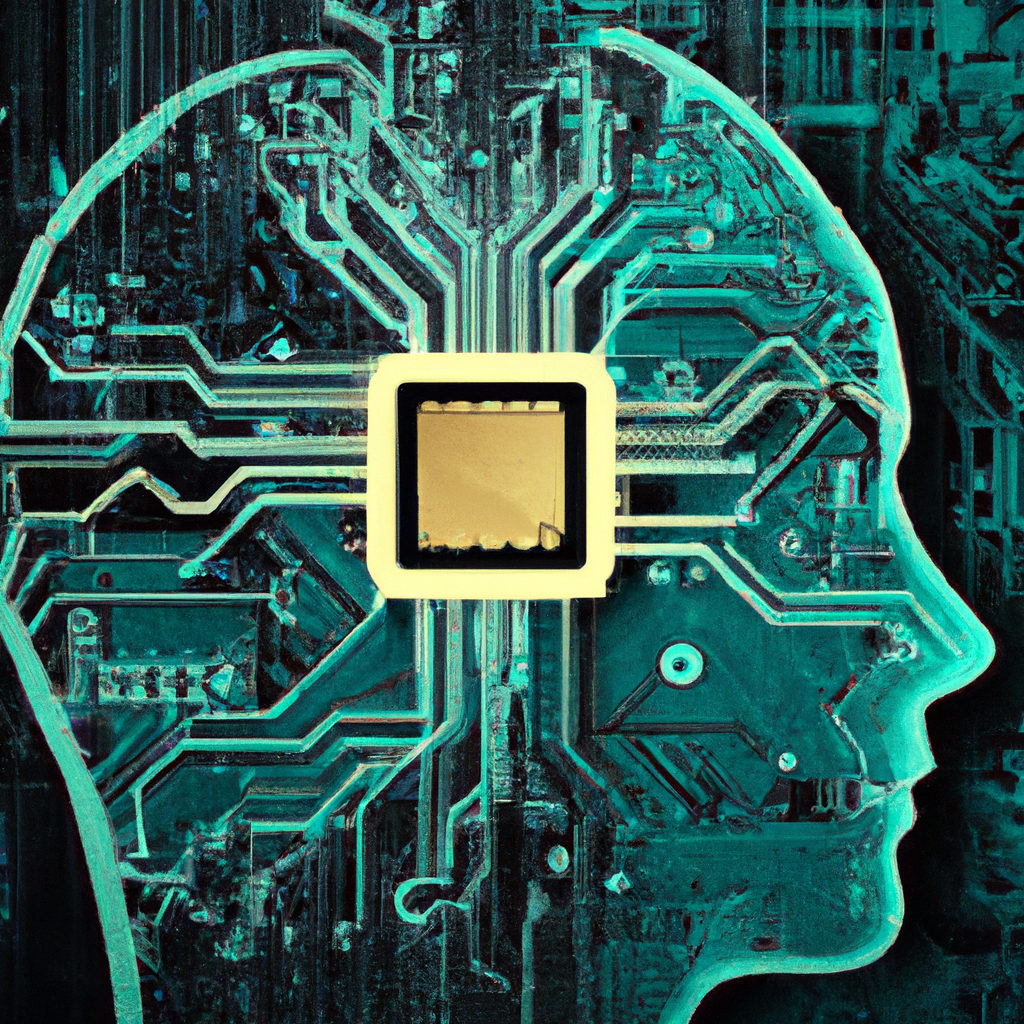Have you ever wondered what exactly machine learning is? In a world where technology reigns supreme, it’s becoming increasingly important to understand the basics of this rapidly advancing field. Machine learning has revolutionized various industries, from healthcare to finance, and its impacts are only expected to grow. In this article, we’ll explore the fundamentals of machine learning and how it is reshaping our society. Whether you’re a technology enthusiast or simply curious about the latest innovations, this is your chance to get a glimpse into the world of machine learning and its limitless potential. So, let’s embark on this journey together and demystify the wonders of machine learning!
Definition of Machine Learning
Understanding the concept of machine learning
Machine learning is a subset of artificial intelligence (AI) that focuses on enabling computers to learn and make predictions or take actions without being explicitly programmed for each task. It is a field that combines statistical modeling, data analysis, and computer science to develop algorithms and models that can automatically learn and improve from experience.
The concept of machine learning involves training a machine to recognize patterns in data and make accurate predictions or decisions based on those patterns. It is inspired by how humans learn, in that it learns from data rather than following a set of predefined rules. By using algorithms and statistical techniques, machine learning algorithms improve their performance over time as they are exposed to more and more data.
Differentiating machine learning from traditional programming
Traditional programming relies on a set of predefined rules or instructions for the computer to follow. In contrast, machine learning involves developing algorithms that can learn and improve on their own by processing data. Rather than explicitly programming every possible scenario, machine learning algorithms learn from data and generalize patterns to make predictions or take actions in new, unseen situations.
A key distinction between traditional programming and machine learning is the reliance on data. In traditional programming, rules and instructions are manually defined by developers. In machine learning, data is used to train the algorithms, allowing them to automatically learn and adapt. This data-driven approach makes machine learning particularly useful for handling complex problems that are difficult to solve using traditional programming methods.
Application areas of machine learning
Machine learning has a wide range of applications across various industries and domains. Some of the key areas where machine learning is being successfully applied include:
-
Healthcare: Machine learning is used for diagnosing diseases, predicting patient outcomes, and recommending personalized treatments.
-
Finance: Machine learning algorithms are used for credit scoring, fraud detection, and stock market prediction.
-
Retail: Machine learning is applied in recommendation systems, demand forecasting, and inventory management.
-
Transportation: Machine learning is used for autonomous vehicles, route optimization, and traffic prediction.
-
Manufacturing: Machine learning algorithms are used for quality control, predictive maintenance, and optimization of production processes.
-
Marketing: Machine learning is applied in customer segmentation, personalized advertising, and churn prediction.
-
Natural language processing: Machine learning is used to analyze and understand human language, enabling tasks such as sentiment analysis, machine translation, and chatbots.
-
Computer vision: Machine learning algorithms are used for image and video recognition, object detection, and facial recognition.
These are just a few examples of the wide range of applications of machine learning. As the field continues to advance, we can expect to see even more innovative and impactful applications in various industries.
Types of Machine Learning
Supervised learning
Supervised learning is a type of machine learning where the algorithm learns from labeled data. In this type of learning, the input data is paired with corresponding output labels, and the algorithm learns to map inputs to outputs based on these examples. Supervised learning algorithms are trained to make predictions or classify new, unseen data based on the patterns learned from the labeled training data.
Examples of supervised learning algorithms include linear regression, logistic regression, decision trees, and support vector machines. Supervised learning is widely used in various applications, such as spam email classification, image recognition, and sentiment analysis.
Unsupervised learning
Unsupervised learning is a type of machine learning where the algorithm learns from unlabeled data. Unlike supervised learning, there are no predefined output labels in unsupervised learning. Instead, the algorithm aims to find patterns or structure in the data without any prior knowledge of the output.
Clustering and dimensionality reduction are common tasks in unsupervised learning. Clustering algorithms group similar data points together, while dimensionality reduction techniques reduce the number of features in the data while retaining its key characteristics. Examples of unsupervised learning algorithms include k-means clustering, hierarchical clustering, and principal component analysis (PCA).
Semi-supervised learning
Semi-supervised learning is a combination of supervised and unsupervised learning. In this type of learning, the algorithm learns from a combination of labeled and unlabeled data. The availability of a small amount of labeled data helps guide the learning process of the algorithm, while the large amount of unlabeled data helps capture the underlying patterns and structure in the data.
Semi-supervised learning is particularly useful when labeled data is scarce or expensive to obtain. It is often used in scenarios where manually labeling large amounts of data is impractical, such as in natural language processing and image recognition.
Reinforcement learning
Reinforcement learning is a type of machine learning where an agent learns to interact with an environment to maximize a reward signal. The agent learns through a process of trial and error, taking actions in the environment and receiving feedback in the form of rewards or penalties. The goal of reinforcement learning is to learn a policy that maximizes the cumulative reward over time.
Reinforcement learning has been successfully applied in various domains, including robotics, game playing (such as AlphaGo), and autonomous systems. It has the potential to solve complex problems that require long-term planning and decision-making in dynamic environments.

Algorithms Used in Machine Learning
Linear regression
Linear regression is a supervised learning algorithm used to model the relationship between a dependent variable and one or more independent variables. It assumes a linear relationship between the input variables and the output variable and aims to find the best-fitting line that minimizes the sum of squared errors.
Linear regression is commonly used for predicting continuous numerical values, such as predicting house prices based on the area, number of rooms, and other features. It is a simple yet powerful algorithm that provides insights into the relationship between variables.
Logistic regression
Logistic regression is a supervised learning algorithm used for binary classification tasks, where the output variable is categorical with two possible outcomes. It models the relationship between the input variables and the probability of the output belonging to a particular class using a logistic function.
Logistic regression is widely used in various domains, such as predicting whether a customer will churn, classifying emails as spam or not, and determining the likelihood of a patient having a disease based on medical test results. It provides interpretable results and is well-suited for problems with a binary outcome.
Decision trees
Decision trees are versatile supervised learning algorithms that can be used for both classification and regression tasks. They represent decisions and their possible consequences in a tree-like structure, where each internal node represents a decision based on a feature, and each leaf node represents a class label or a predicted value.
Decision trees are easy to understand and interpret, making them popular in domains where interpretability is important. They can handle both categorical and numerical data and can capture non-linear relationships between variables. However, decision trees can be prone to overfitting and may not generalize well to unseen data.
Random forests
Random forests are ensemble learning algorithms that combine multiple decision trees to make predictions. They work by constructing a multitude of decision trees and making predictions based on the majority vote or average prediction of the individual trees.
Random forests are robust and less prone to overfitting compared to individual decision trees. They can handle high-dimensional data and provide better generalization performance. Random forests are widely used in various applications, including image classification, anomaly detection, and bioinformatics.
Support vector machines
Support vector machines (SVMs) are supervised learning algorithms that can be used for both classification and regression tasks. They work by finding an optimal hyperplane that separates the data into different classes or predicts values for regression tasks.
SVMs are powerful algorithms that can handle high-dimensional data and are effective in handling both linearly and non-linearly separable data. They are widely used in applications such as text classification, image recognition, and bioinformatics.
Naive Bayes
Naive Bayes is a supervised learning algorithm based on the Bayes’ theorem of probability theory. It assumes that the features are conditionally independent given the class label, which is a naive assumption but often holds well in practice.
Naive Bayes is computationally efficient and can handle large datasets with high-dimensional features. It is commonly used in text classification, spam filtering, and sentiment analysis tasks.
Neural networks
Neural networks are a class of algorithms inspired by the structure and function of biological neural networks. They consist of interconnected layers of artificial neurons, where each neuron performs a simple computation and passes the result to the next layer.
Neural networks are capable of learning complex patterns and relationships in data and can handle both structured and unstructured data. Deep neural networks, in particular, have been successful in various domains, including image recognition, natural language processing, and speech recognition.
Process of Machine Learning
Data collection and preprocessing
The first step in the machine learning process is collecting and preprocessing the data. This involves gathering the relevant data from various sources and preparing it for analysis. Data preprocessing tasks may include cleaning the data, handling missing values, standardizing or normalizing the data, and splitting the data into training and testing sets.
Data collection is a crucial step as the quality and quantity of the data have a significant impact on the performance and accuracy of the machine learning models.
Feature selection and extraction
Once the data is prepared, the next step is selecting or extracting the relevant features from the data. Features are the variables or attributes that represent the characteristics of the data. The choice of features is important as it directly affects the performance of the machine learning models.
Feature selection involves identifying the most informative features that have a significant impact on the target variable. Feature extraction involves transforming the existing features into a new set of features that capture the underlying patterns in the data.
Algorithm training
After the data is prepared and the features are selected or extracted, the next step is training the machine learning algorithm. This involves feeding the labeled training data into the algorithm and letting it learn the patterns and relationships in the data.
During the training process, the algorithm adjusts its internal parameters to minimize the difference between the predicted output and the true output labels. The algorithm learns from the data by iteratively updating its parameters based on an optimization algorithm, such as gradient descent.
Model evaluation
Once the algorithm is trained, the next step is evaluating its performance on unseen data. This involves using the trained model to make predictions or classifications on the testing data and comparing the predicted outputs with the true outputs.
Model evaluation metrics, such as accuracy, precision, recall, and F1 score, are used to assess the performance of the model. The choice of evaluation metrics depends on the specific problem and the goals of the application.
Model deployment
After the model is evaluated and deemed satisfactory, it can be deployed in a real-world setting. Model deployment involves integrating the trained model into a production environment and making it available for use.
The deployment process may involve additional considerations, such as scaling the model to handle larger volumes of data, ensuring the model’s performance and reliability, and monitoring the model’s performance in real-time to detect any issues or changes in data distribution.

Applications of Machine Learning
Natural language processing
Natural language processing (NLP) is a subfield of AI that focuses on the interaction between humans and computers using natural language. Machine learning plays a crucial role in NLP tasks, such as sentiment analysis, machine translation, question answering, and chatbot development.
Machine learning models are trained on large volumes of text data to understand and generate human language. They can extract meaningful information from text, recognize patterns, and perform tasks such as sentiment analysis, named entity recognition, and text classification.
Computer vision
Computer vision is a field that focuses on enabling computers to understand and interpret visual information from images or videos. Machine learning algorithms are used in computer vision tasks, such as image recognition, object detection, and scene understanding.
Machine learning models are trained on labeled images to learn the visual patterns and features that distinguish different objects or scenes. They can recognize objects in images, detect and track faces, estimate the depth of objects, and perform tasks such as image captioning and image synthesis.
Speech recognition
Speech recognition is a technology that converts spoken language into written text. Machine learning algorithms are used in speech recognition systems to transcribe speech and understand spoken commands.
Machine learning models are trained on large speech datasets to learn the acoustic and linguistic patterns in human speech. They can recognize spoken words or phrases, transcribe spoken content, and enable applications such as voice assistants, speech-to-text systems, and voice-controlled devices.
Recommendation systems
Recommendation systems are algorithms that suggest items or content to users based on their preferences or behavior. Machine learning plays a crucial role in recommendation systems to understand user preferences, learn from user interactions, and make personalized recommendations.
Machine learning models are trained on user data, such as previous purchases, browsing history, or user ratings, to learn individual preferences and identify relevant patterns. They can then generate personalized recommendations for products, movies, music, articles, and more.
Fraud detection
Fraud detection is an important application of machine learning in various domains, such as finance, insurance, and e-commerce. Machine learning algorithms can learn patterns of fraudulent behavior and detect anomalies or suspicious activities.
Machine learning models are trained on historical data to learn the characteristics of fraudulent transactions or activities. They can identify patterns that deviate from normal behavior and flag potentially fraudulent transactions or activities for further investigation.
Challenges in Machine Learning
Data quality and quantity
Data quality and quantity are significant challenges in machine learning. The performance and accuracy of machine learning models heavily depend on the quality and quantity of the training data. High-quality, representative data is needed to capture the underlying patterns and ensure the generalization of the models.
Lack of labeled data or imbalanced data distribution can also pose challenges in training machine learning models. Insufficient data or biased data can lead to poor performance, biased predictions, or overfitting.
Overfitting and underfitting
Overfitting and underfitting are common challenges in machine learning. Overfitting occurs when a model learns the training data too well and fails to generalize to new, unseen data. This often happens when the model is too complex relative to the amount of training data available.
Underfitting, on the other hand, occurs when a model is too simple to capture the underlying patterns in the data. It fails to learn the relationships between the input features and the output variable, resulting in poor performance.
Balancing the complexity of the model and the amount of available data is crucial to avoid overfitting or underfitting and achieve optimal performance.
Bias and fairness
Bias and fairness are important considerations in machine learning, particularly when the models are used in decision-making processes that can impact individuals or groups. Machine learning models can unintentionally perpetuate or amplify existing biases present in the training data.
Bias can occur due to imbalanced representation of certain groups in the training data or due to biased labels assigned to the data. It can lead to discriminatory or unfair outcomes, such as biased hiring decisions or biased loan approval processes.
Ensuring fairness and mitigating bias in machine learning models requires careful consideration of the data used for training, regular monitoring of model performance, and the development of techniques and algorithms that promote fairness.
Interpretability and explainability
Interpretability and explainability are important challenges in machine learning, especially in domains where the decisions made by the models have a significant impact on individuals or society. Machine learning models, especially complex ones like deep neural networks, can be difficult to interpret and explain.
Understanding how a model arrived at a particular prediction or decision is crucial for transparency, accountability, and building trust in the model. Interpretable and explainable models allow humans to understand the underlying factors and reasoning behind a model’s predictions.
Researchers and practitioners are actively developing techniques and algorithms for model interpretability and explainability, such as feature importance analysis, attention mechanisms, and rule extraction techniques.

Benefits of Machine Learning
Automation and efficiency
Machine learning enables automation and streamlining of various tasks and processes. It can automate repetitive tasks, such as data entry or data processing, and free up human resources for more complex and creative tasks.
Machine learning algorithms can process large volumes of data quickly and efficiently, enabling organizations to make data-driven decisions and take timely actions. It can help optimize business processes, improve productivity, and reduce operational costs.
Accurate predictions and decision-making
Machine learning algorithms are capable of analyzing vast amounts of data, identifying patterns, and making accurate predictions or decisions. They can learn from historical data and detect subtle patterns or relationships that may not be apparent to humans.
Machine learning models can make predictions or classifications with high accuracy, reducing the risk of human errors and biases. They can assist in decision-making processes, such as risk assessment, demand forecasting, or customer segmentation, by providing valuable insights and recommendations.
Personalization and customization
Machine learning enables personalization and customization of products, services, and user experiences. By analyzing individual preferences, behavior, and historical data, machine learning models can provide personalized recommendations, suggestions, or content tailored to each user’s unique needs and preferences.
Personalization can enhance customer satisfaction, increase engagement, and drive customer loyalty. Machine learning-powered recommendation systems, personalized marketing campaigns, and adaptive user interfaces are examples of how personalization is being leveraged to improve user experiences.
Advanced data analysis
Machine learning techniques can extract valuable insights and knowledge from complex, high-dimensional, or unstructured data. They can uncover hidden patterns, relationships, or trends that may not be obvious using traditional analytic methods.
Machine learning algorithms can handle diverse types of data, such as text, images, audio, or sensor data, and capture intricate patterns or nuances. They can detect anomalies, identify hidden clusters, perform sentiment analysis, or extract relevant features from the data.
Ethical Considerations in Machine Learning
Privacy concerns
Machine learning relies on vast amounts of data, which can include personal or sensitive information. Privacy concerns arise when individuals’ personal data is collected, stored, and used without their knowledge or consent.
To address privacy concerns, organizations must ensure that proper data protection measures are in place. This includes anonymizing or de-identifying data whenever possible, obtaining appropriate consent for data usage, implementing strong data security measures, and complying with data protection regulations.
Discrimination and bias
Machine learning models can inadvertently perpetuate or amplify biases present in the training data, leading to discriminatory or unfair outcomes. Bias can occur due to imbalanced data representation or biased labeling practices.
To mitigate discrimination and bias, it is crucial to evaluate and monitor the performance of machine learning models regularly. Fairness metrics should be incorporated in the evaluation process, and if bias is detected, steps should be taken to address it, such as data augmentation, re-labeling efforts, or algorithmic modifications.
Transparency and accountability
Machine learning models, especially complex ones like deep neural networks, can be difficult to interpret or explain. The lack of transparency in the decision-making process of machine learning models can raise concerns about accountability and trust.
To promote transparency and accountability, efforts are being made to develop techniques and algorithms for model interpretability and explainability. These techniques aim to provide insights into how a model arrived at its predictions or decisions, enabling humans to understand and question the underlying factors and reasoning.

Future of Machine Learning
Advancements in deep learning
Deep learning, a subfield of machine learning, has seen significant advancements in recent years. Deep learning models, especially deep neural networks, have achieved state-of-the-art performance in various domains, such as image and speech recognition, natural language processing, and autonomous systems.
The future of machine learning is likely to involve further advancements in deep learning models and techniques. Researchers are exploring new architectures, algorithms, and training strategies to make deep learning more efficient, interpretable, and applicable to new domains.
Integration with other technologies
Machine learning is being integrated with other technologies to create more powerful and intelligent systems. The combination of machine learning with technologies like big data, cloud computing, Internet of Things (IoT), and blockchain has the potential to revolutionize various industries and domains.
For example, machine learning can leverage big data to analyze and make predictions on massive datasets. It can work in conjunction with IoT devices to enable real-time monitoring and control of systems. Machine learning algorithms can also benefit from the scalability and computing power of cloud computing platforms.
Increased adoption in various industries
As machine learning continues to prove its value and capabilities, we can expect to see increased adoption in various industries. Organizations are realizing the potential of machine learning to drive innovation, improve efficiency, and make data-driven decisions.
Industries such as healthcare, finance, retail, transportation, and manufacturing are already leveraging machine learning to gain a competitive edge and enhance their operations. As the technology becomes more accessible and easier to use, we can expect to see its adoption in smaller organizations and across different domains.
Conclusion
Machine learning is a powerful field of study that enables computers to learn from data and make accurate predictions or decisions. It is a subset of artificial intelligence that revolutionizes the way we analyze data, solve complex problems, and make decisions.
In this article, we have explored the definition and concept of machine learning, differentiating it from traditional programming. We have discussed the various types of machine learning, including supervised learning, unsupervised learning, semi-supervised learning, and reinforcement learning. We have also delved into the common algorithms used in machine learning, such as linear regression, logistic regression, decision trees, random forests, support vector machines, naive Bayes, and neural networks.
Furthermore, we have outlined the process of machine learning, including data collection and preprocessing, feature selection and extraction, algorithm training, model evaluation, and model deployment. We have highlighted the wide range of applications of machine learning, such as natural language processing, computer vision, speech recognition, recommendation systems, and fraud detection.
We have also discussed the challenges in machine learning, including data quality and quantity, overfitting and underfitting, bias and fairness, and interpretability and explainability. Additionally, we have explored the benefits of machine learning, such as automation and efficiency, accurate predictions and decision-making, personalization and customization, and advanced data analysis.
Ethical considerations in machine learning, such as privacy concerns, discrimination and bias, and transparency and accountability, have been addressed. Finally, we have looked into the future of machine learning, including advancements in deep learning, integration with other technologies, and increased adoption in various industries.
Machine learning continues to evolve and shape our world, and its potential is vast. With ongoing advancements and applications, machine learning has the capability to transform industries, drive innovation, and provide solutions to complex problems. It is an exciting field that promises a future where intelligent machines are an integral part of our everyday lives.










